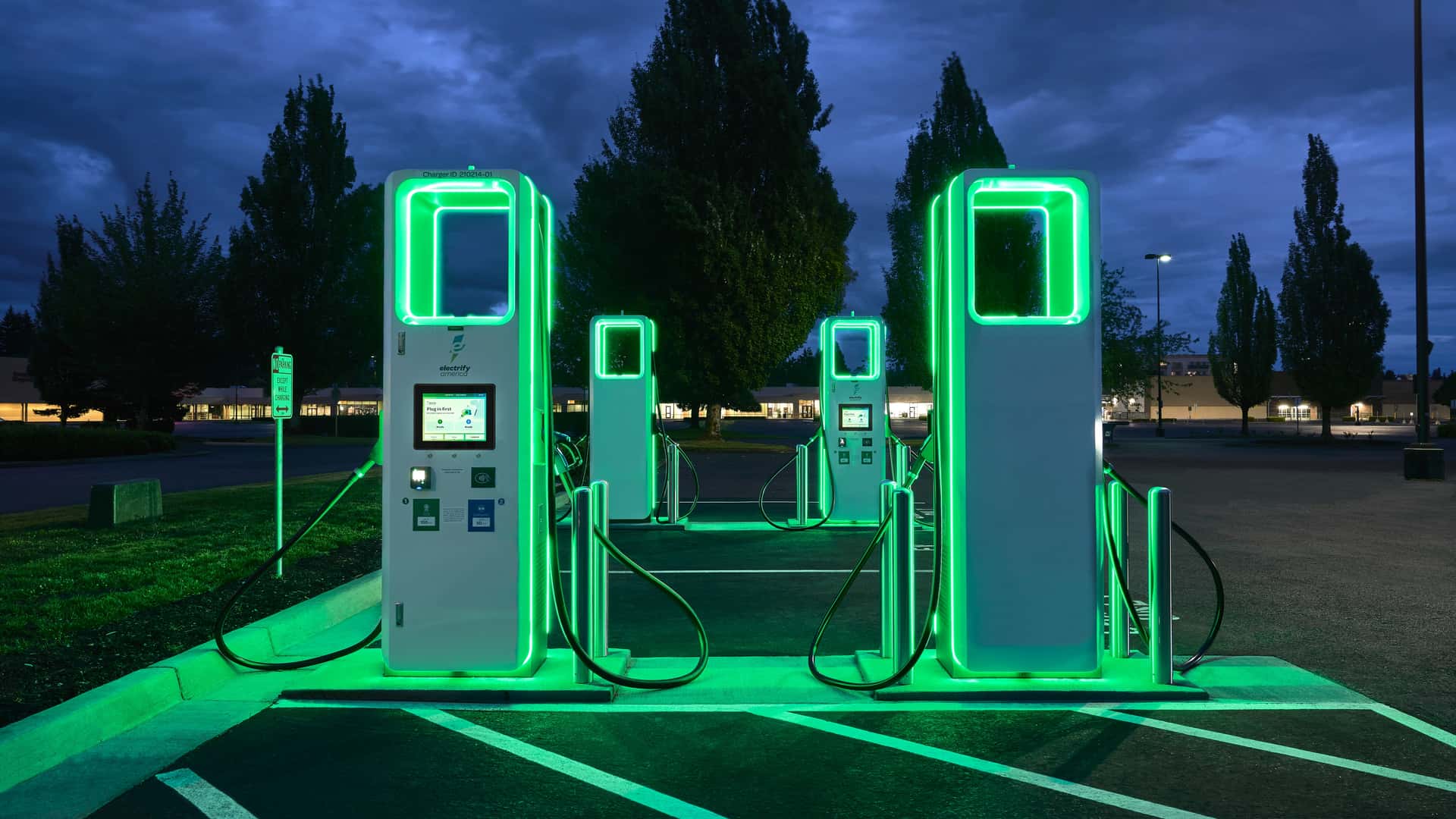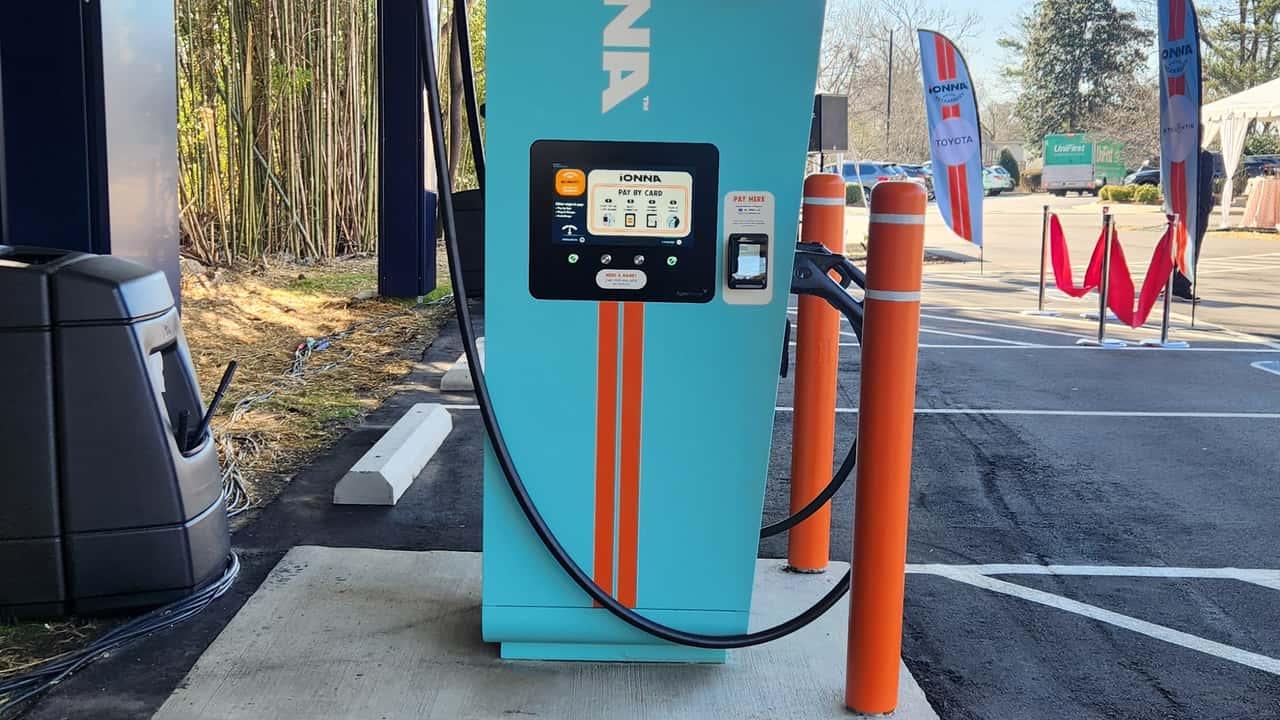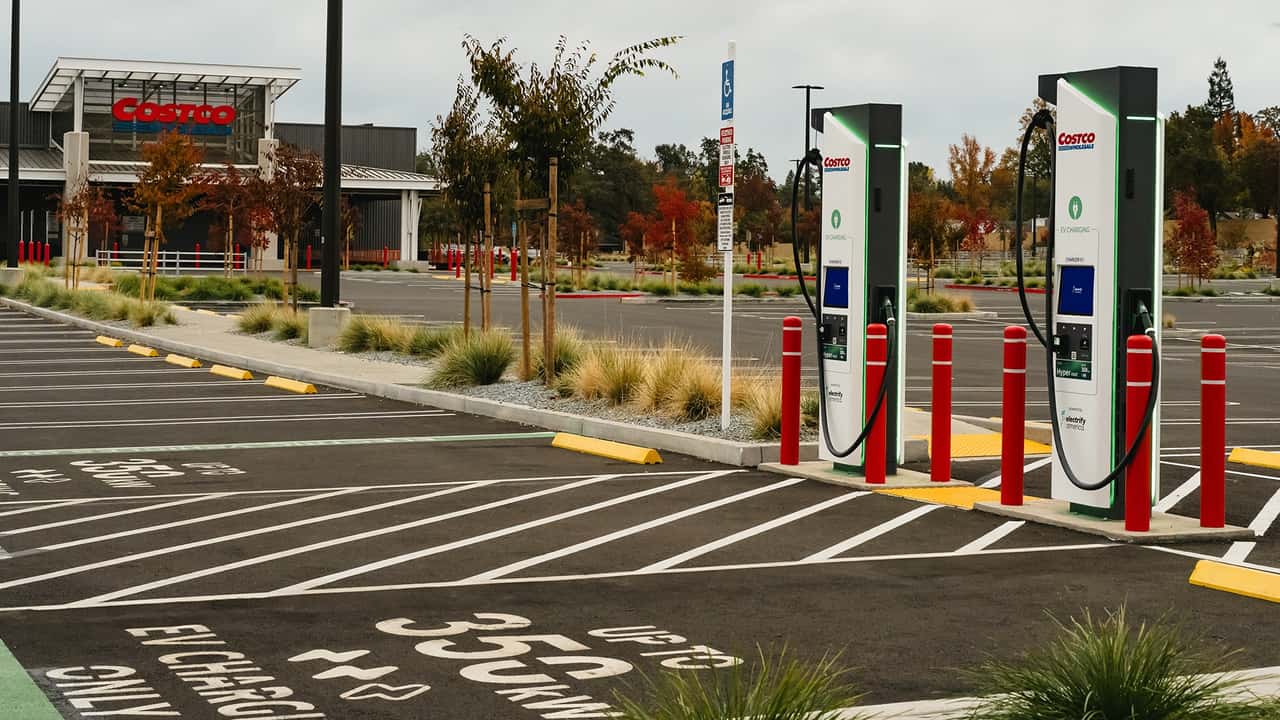Unggulan
- Dapatkan link
- X
- Aplikasi Lainnya
Why Fast Chargers Cost a Fortune: The Real Reason Revealed.

Over fifty percent of the expense for a new DC Fast Charger goes towards a singular safety circuit. Specialists believe this might evolve in the future.
- Building DC fast chargers can be extremely expensive.
- About 60% of that cost is a circuit designed to prevent people from getting electrocuted while charging.
- There may be a cheaper, just-as-safe way to accomplish this while also making EV chargers more reliable.
Have you ever pondered why DC fast chargers are so costly to construct? A solitary 300-kilowatt Level 3 charger—that’s merely one parking at a public DC fast charger can exceed $100,000. This expense is among the factors contributing to the sluggish development of charging infrastructure, which has largely depended on governmental funding. a la federal funding .
Let’s discuss what’s inside that charger. If you take it apart, you’ll discover around $90,000 worth of electronic components designed to transfer power from the electrical grid to your vehicle’s battery. The surprising part? Approximately 60% of this expense covers a single safety circuit ensuring nothing goes awry and turns you into toast. In essence, over half the price of an electric vehicle charger is dedicated solely to protecting your life.

$54,000 in Shock Protection: Why It Matters
That system is called an isolation link. According to IEEE Spectrum The estimated cost for this protective measure is around $54,000. If you extrapolate that to cover an entire 8-stall charging area, over $430,000 would be allocated solely to safety gear. This is how it functions:
Gas pumps rely on mechanical flow control to stop fuel from flowing into a car. EV chargers deal with high-voltage electricity, frequently at 800 volts or higher . Electricity is lazy—it's going to find the shortest path to ground, and if things go sideways at such a high power, it's enough to fry you instantly. You can see why safety is such a big deal.
An isolation link achieves a safety principle known as galvanic isolation . This means taking two separate circuits in a single electrical system and preventing current from flowing between them. In the world of EV chargers, this means severing the electrical path between the charger's power source and the car. So on the off chance that a fault does occur, the energy has nowhere to go but back into the grid.
Here's how IEEE explains it:
Suppose an EV’s battery is leaking. The leaked fluid is conductive, and can therefore produce a current path between the battery circuit and the vehicle chassis. If the ground circuit happens to be broken, then, without isolation, the vehicle’s chassis would be at a high voltage. So a person touching the car while standing on the ground could receive a potentially lethal electric shock. With isolation, there wouldn’t be a shock hazard, because no current path would exist from the electric utility to the car body.
For isolation purposes, each DC fast charger incorporates a transformer within its power conversion apparatus—the component responsible for converting alternating current (AC) to direct current (DC), and vice versa. These high-frequency transformers can transfer thousands of watts of electrical energy at elevated voltage levels, serving as an essential element in the circuit design without establishing a direct link from the grid to your vehicle. While this setup is intricate and costly, omitting it would risk turning your Tesla into a makeshift Tesla coil during a charging error.
More Affordable Charging Options Are Not as Straightforward As They Seem

Scientists and engineers recognize that the cost of charging infrastructure is prohibitively high. They are exploring methods to reduce expenses without sacrificing safety. However, several proposed solutions entail significant drawbacks and would require overhauling the current charging processes for all contemporary electric vehicles.
One suggestion is to eliminate the isolation connection in the charger and instead mandate that electric vehicles incorporate their own isolation mechanism within the vehicle’s onboard charger. As onboard chargers in cars manage power conversion, they typically include galvanic isolation. Nonetheless, many of these systems generally support power conversion only up to Level 2 charging rates, with Tesla being an exception, for instance. can handle up to 48 amps in most of its versions ).
This might significantly reduce the expense of the chargers, yet all cars aren’t constructed identically.
Today’s electric vehicles come with various charging systems, and transferring the responsibility to manufacturers would necessitate a new universal standard that currently does not exist. This could potentially leave earlier models of EVs behind. Additionally, there is the concern about relying on carmakers to embrace this new universal standard and execute it securely. After all, what we do know is that automakers are entirely consistent when it comes to regulating themselves without external oversight. examining cases such as your observation of Volkswagen’s diesel emissions cheating, the General Motors ignition switch issue, and the Takata airbag recalls ).
Next comes the significant issue of expense. We shouldn't overlook that the price tag for this circuit won’t vanish into thin air. Relocating the hardware to the vehicle would merely shift the cost from the charging station to the automobile itself. To put it succinctly, it’s an immediate non-starter.
The Argument for Abandoning Solitude

This brings the problem full circle: safety measures make DCFCs insanely expensive. And with expense comes slower deployments and a potential limit on the number of stalls per site. As for the solution? Some experts are putting it bluntly and recommending ditching isolation links in charging equipment altogether.
On the surface, this might sound dangerous. But IEEE has an idea: what if, instead of isolating the circuits, we added a redundant ground? Think about it: the second ground could mean not only having a redundant failsafe but also detecting a shorted ground and shutting down the charging equipment the instant that it's detected. This could, in theory, eliminate the need for a costly isolation link. It would also significantly improve charger reliability, as it simplifies the charger's power electronics by eliminating a major point of failure.
Now comes a second issue that must be accounted for: voltage mismatches.
Should the line voltage from the charger surpass that of the vehicle’s battery momentarily, an unchecked flow of current might result in damage to the car components. According to IEEE, addressing this issue involves employing a buck regulator—a device designed to reduce voltage levels securely from a power supply. However, the piece notes that although this introduces additional intricacy into the charging setup, incorporating a buck regulator capable of managing comparable energy transfer would only increase costs by approximately 10%, relative to the isolation link.
Will This Actually Happen?
Perhaps, but definitely not in the near future.
The rationale for eliminating galvanic isolation appears logical in theory. original Tesla Roadster used non-galvanically isolated charging, but It also lacked the ability to utilize DC Fast Charging. Contemporary DC Fast Chargers deliver substantial currents into today’s electric vehicles' batteries and necessitate additional safety features (thus requiring an isolation link). However, if—and this is a significant condition—this were not necessary, if —The industry not only has the potential to create a dependable and secure method for achieving this, but it could also revolutionize the electric vehicle charging landscape.
Through a pragmatic perspective, the global community is currently grappling with providing adequate public charging solutions, and no one is eager to risk being at the forefront of safety concerns. Both charging businesses, vehicle manufacturers, and regulatory bodies require an absolute assurance that any non-isolated system will match the current standards of charger safety. Assuming this condition were met, implementing these changes could still take several years—particularly since safety must remain a paramount consideration throughout the process.
For now, anticipate that new electric vehicle chargers will continue to be quite expensive. Since when it comes to ensuring your safety from electrical hazards, the industry has been unwilling to compromise— at least not yet.
More EV Charging News
- Electrify America's 2024 Stats Reveal How The EV Market Is Blowing Up
- Public Electric Vehicle Charging Was Already Deteriorating. Then Trump Eliminated Federal Financing
- Trump's Removal of EV Chargers Might Cost Taxpayers More Than $1 Billion
- The Federal EV Charger Program May Die. It Was Just Starting To Pay Off
- Dapatkan link
- X
- Aplikasi Lainnya
Postingan Populer
National Gallery of Zimbabwe Set to Showcase 80 Photographic Masterpieces
- Dapatkan link
- X
- Aplikasi Lainnya
Nepal: A Golden Land for Content Creators
- Dapatkan link
- X
- Aplikasi Lainnya
Komentar
Posting Komentar